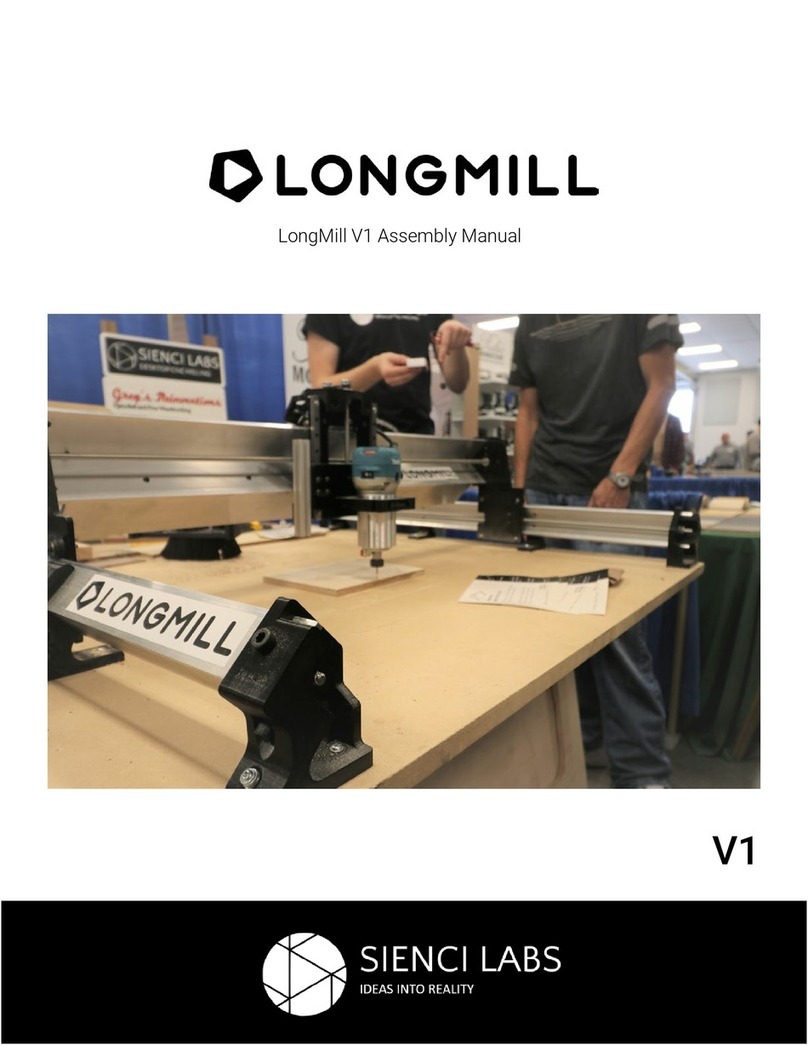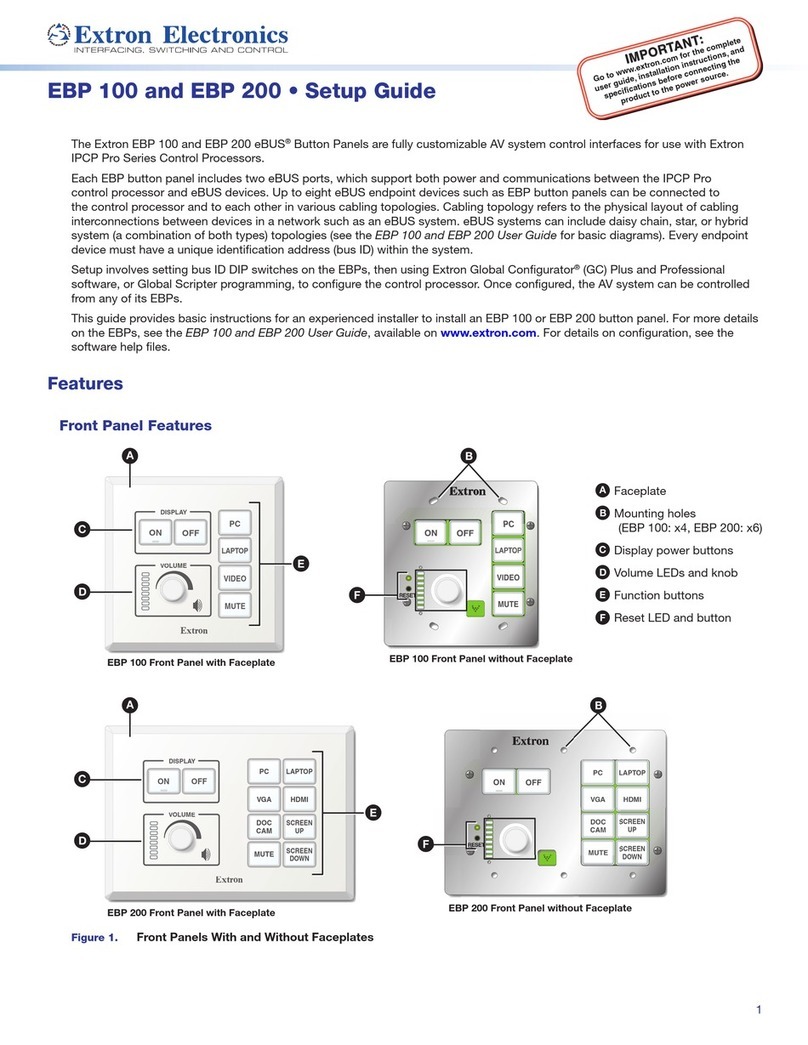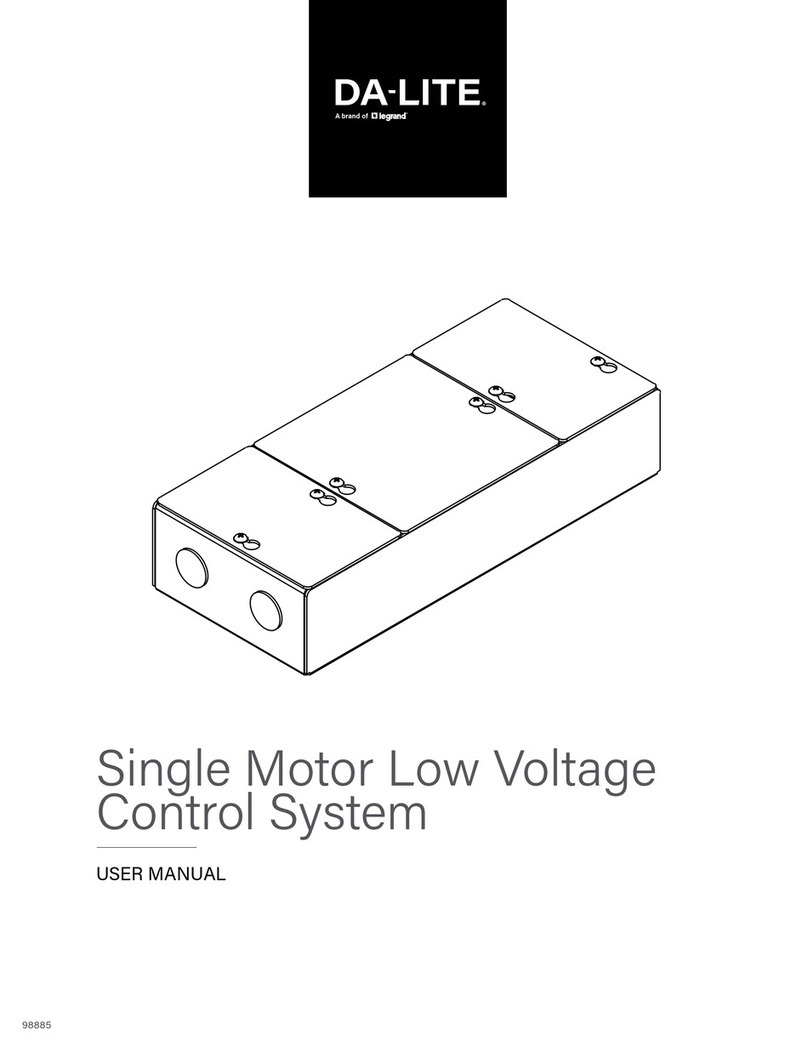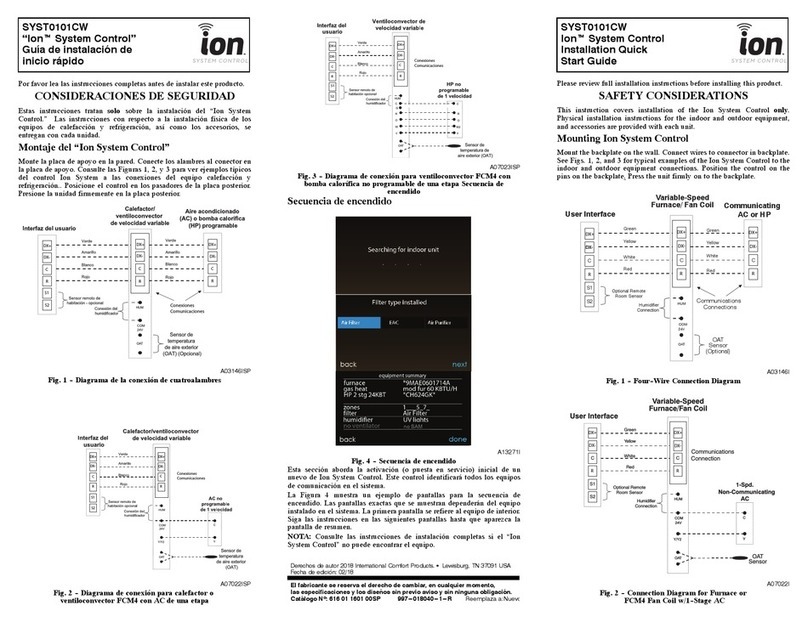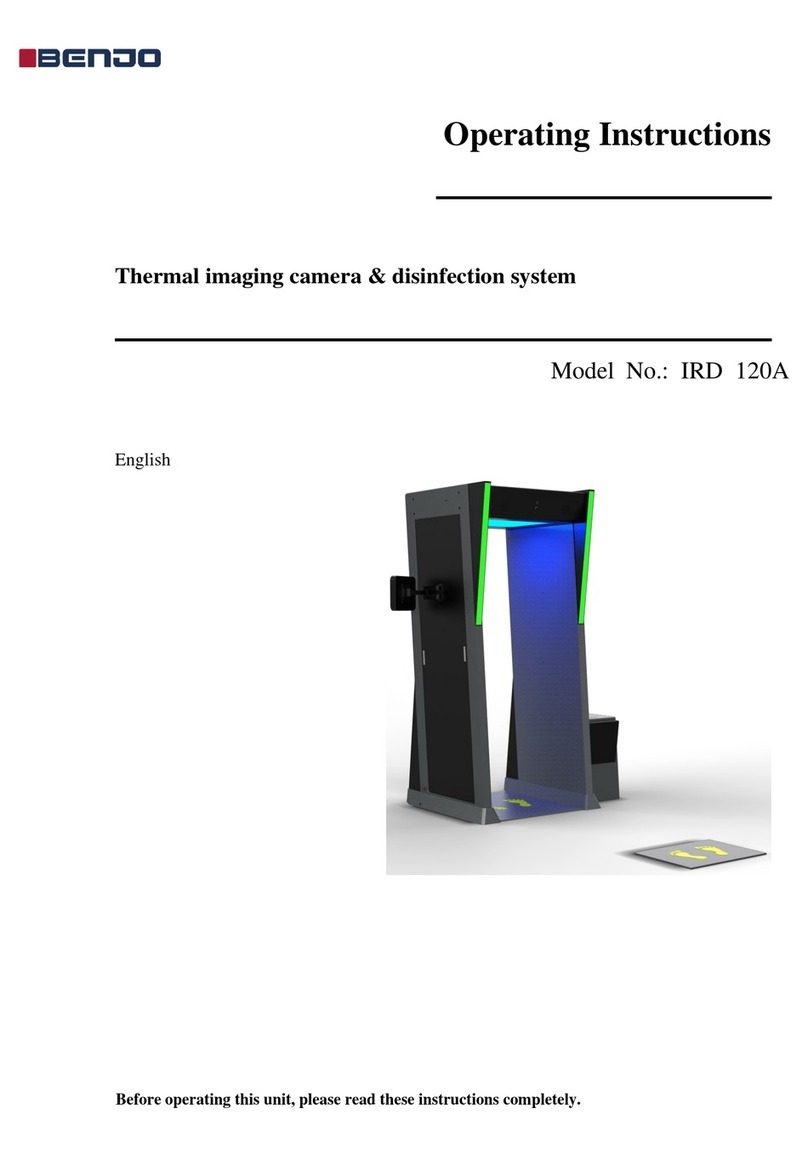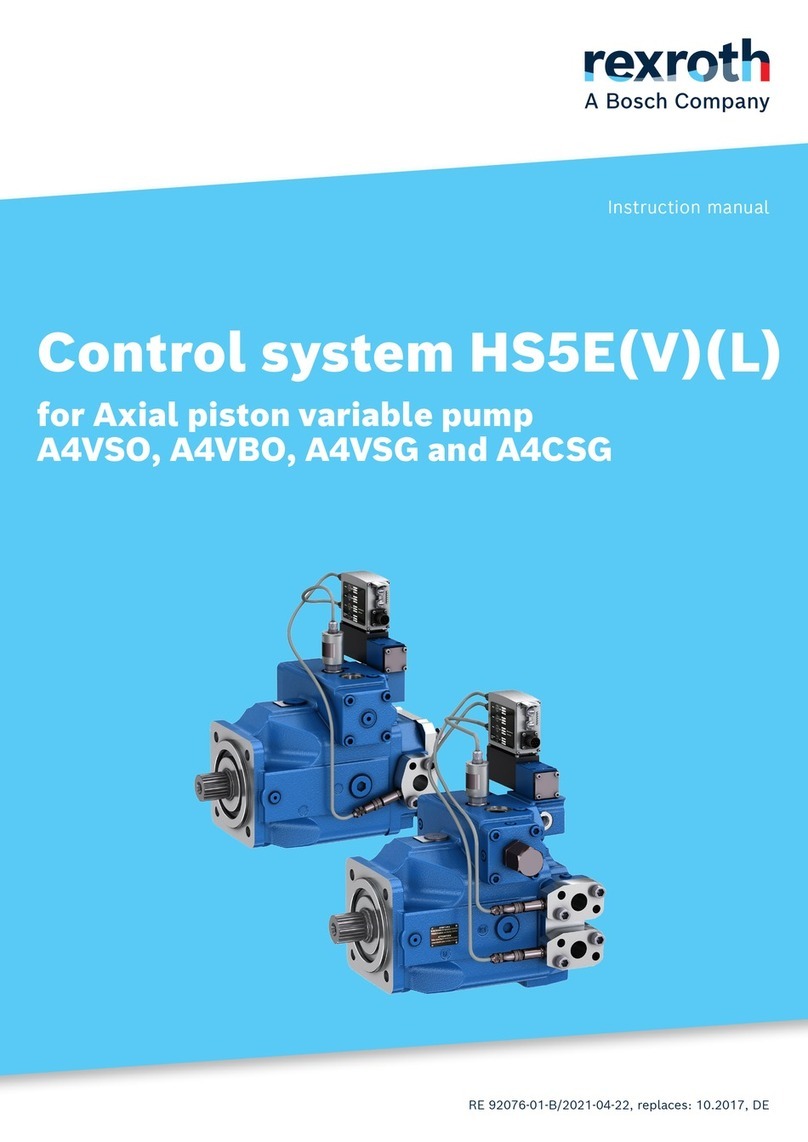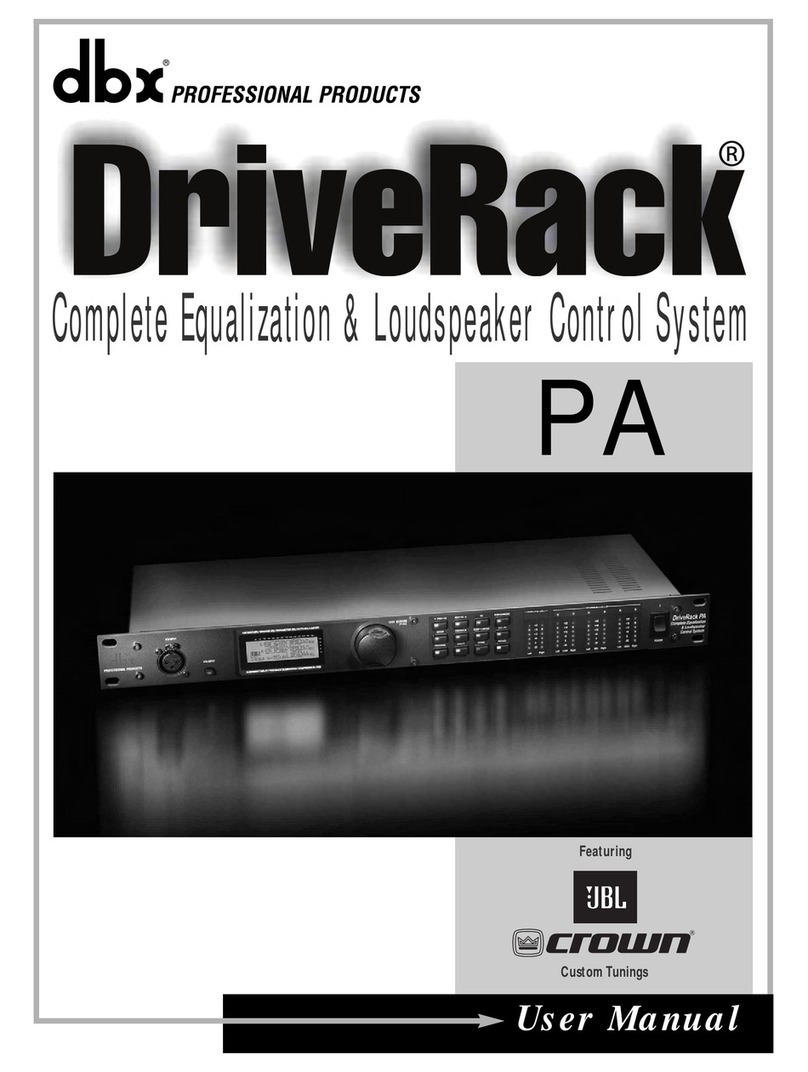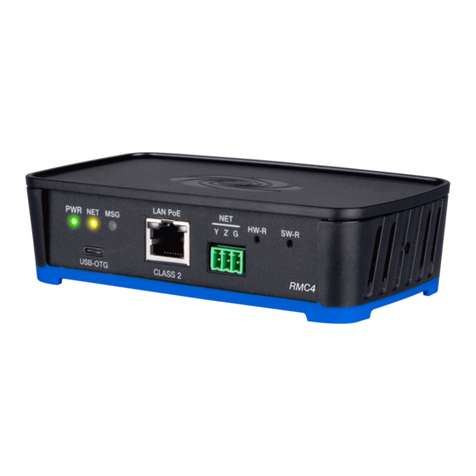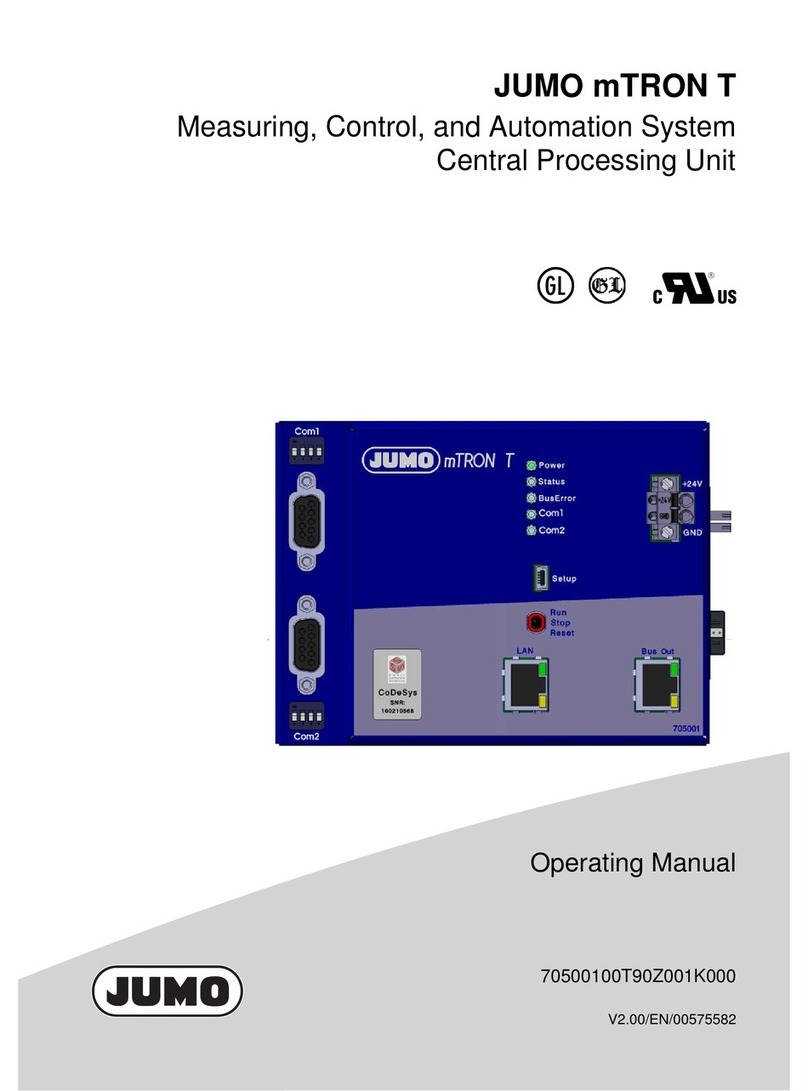Böhnke + Partner bp308 User manual

System »bp308«
General Information
Safety instructions
Commissioning
EC-Type Examination
www.boehnkepartner.de
Installation Manual

© BÖHNKE + PARTNER
Member of the Schmersal Group
Berg sch Gladbach 2014
1. Intermed ate result of the f rst ed t on 2014
Installat on Manual System »bp308«
February 2014
Author: Development Department
Proof read ng: Development Department
Type sett ng: Development Department
Created us ng OpenOff ceOff ce 4.0
Th s Installat on Manual s n ts ent rety copyr ghted. All r ghts, espec ally the r ghts of trans-
lat on, presentat on, reproduct on, copy ng, us ng photo mechan cal or other way, and stor-
age n electron c med a.
Th s manual does not prov de nformat on about our ent re product opt ons.
Regardless of the care that has been used for the creat on of text, llustrat ons, and pro-
grams, we can not take respons b l ty for poss ble errors or the consequences of a legal l ab-
l ty.
The data presented n th s work, names, trade names, trademarks, etc., may be trademarks
and are subject to statutory prov s ons even f not expl c tly.
® BÖHNKE + PARTNER, BlueModus®, W nMOS®300 and CANw zard® are reg stered trade-
marks.
www.boehnkepartner.de

Table of Contents
1 General Information .......................................................................................................7
1.1 Many Than s ..............................................................................................................7
1.2 Purpose........................................................................................................................8
1.3 Documentation............................................................................................................8
2 Safety Information...........................................................................................................9
2.1 Qualified Personnel....................................................................................................9
2.2 Safety Instructions Concerning Control Units ........................................................9
2.3 Assembling and Operating Requirements..............................................................11
3 Product Certifications .................................................................................................13
3.1 General Description .................................................................................................13
3.2 EC Type Test Certificate BPL 02 with SMZ............................................................14
3.3 EC Certification bp308
(95/16E/G): 01/208/5A/1103/1644Ae5.................................................................................17
3.3.1 Declaration of Conformity with EC Directive
(95/16/E ).................................................................................................................................. 17
3.3.2 Declaration of Conformity with EC Directive (2004/108/E ) / EN 12015+EN 12016.....18
4 Standards......................................................................................................................19
4.1 EMC-Directives..........................................................................................................19
4.2 EN 81.......................................................................................................................... 20
5 Control System »bp308« .............................................................................................21
5.1 Description of the Product and its Functions.........................................................21
5.2 Summary of the Functions of bp308 ......................................................................22
5.3 Decentralised Lift Control .......................................................................................25
5.4 The Group System ...................................................................................................25
5.4.1 Priority Calls .................................................................................................................. 26
5.4.2 roup Display in WinMOS®300 ....................................................................................26
5.5 Components of the bp308 .......................................................................................27
5.6 Variants of bp308......................................................................................................29
5.7 Brief Description bp308............................................................................................29
5.7.1 Top Shot .......................................................................................................................29
5.7.2 Left Side View................................................................................................................ 30
5.7.3 Bottom Shot................................................................................................................... 30
5.7.4 Right Side View..............................................................................................................31
5.7.5 Operator Panel and LCD of the bp308...........................................................................31
5.7.5.1 Standard View ..................................................................................................................31
5.7.5.2 Lift Status Bar....................................................................................................................32
5.7.5.3 Safety Circuit Status Bar ..................................................................................................32
5.7.5.4 Operator Panel .................................................................................................................32

5.7.6 Service Menu................................................................................................................. 32
5.7.6.1 Starting the Service Menu.................................................................................................33
5.7.7 Setup Menu.................................................................................................................... 33
5.7.7.1 Starting the Setup menu....................................................................................................33
5.7.8 Call Menu.......................................................................................................................34
5.7.9 Info Menu.......................................................................................................................34
5.7.10 Terminal-Mode...............................................................................................................35
5.7.11 Monitor Program LPCmon.............................................................................................35
5.7.11.1 Starting the Monitoring Program.....................................................................................35
5.7.12 Program and Parameter Memory...................................................................................36
5.7.12.1 eneral Information.........................................................................................................36
5.7.12.2 Exchange.........................................................................................................................36
5.7.12.3 Software Update..............................................................................................................37
5.7.13 Control System bp308 and Frequency Inverter together in one Cabinet .......................38
5.7.14 Easy Service - thanks to clear Layout Assembly............................................................39
5.7.15 Control Cabinet with bp308 unit.....................................................................................39
5.7.16 Standard Features ........................................................................................................41
5.7.17 Optional Features...........................................................................................................43
5.7.17.1 Uninterruptible Power Supply (UPS)...............................................................................43
6 Installation and Commissioning.................................................................................45
6.1 Conditions for Storage and Operation ...................................................................45
6.2 Preparation ...............................................................................................................46
6.3 Installation of the Controller System bp308...........................................................47
6.4 Installation of the Control Cabinet ..........................................................................47
6.5 Assembly of the Car Terminal Box .........................................................................47
6.6 Assembly of the Absolute Encoder.........................................................................47
6.6.1 Fixation Kits for Absolute Encoder.................................................................................48
6.6.2 Assembly in the Shaft ...................................................................................................48
6.6.3 Assembly on the Car......................................................................................................49
6.7 Assembly of the Magnet Switches..........................................................................50
7 Electrical Installation....................................................................................................51
7.1 Preparation................................................................................................................51
7.2 Interference Suppression and Hints .......................................................................52
7.3 Connection of Shielded Cables...............................................................................56
7.4 Designation of Circuit Diagrams .............................................................................56
7.5 Sample Circuit Diagram of a Rope Traction lift .....................................................59
7.6 Sample Circuit Diagram of a Hydraulically Operated lift ......................................60
7.7 Electrical Installation ...............................................................................................61
7.8 Bus Connection.........................................................................................................61
Electrical Bus Medium.................................................................................................61
7.8.1 Electrical Bus Medium....................................................................................................61
7.8.2 Colours of the Cables.....................................................................................................62
7.8.3 Topology of the Network ...............................................................................................62

7.8.4 Example of a Correct Topology......................................................................................63
7.8.4.1 Control Unit of an lift Out of a roup.................................................................................63
7.8.4.2 roup of Two lifts in One Line ..........................................................................................64
7.8.4.3 roup of Two lifts in Three Lines ....................................................................................65
7.8.4.4 roup of Two lifts in Two Lines .......................................................................................66
7.8.5 Pin Assignments ........................................................................................................... 67
7.8.5.1 Pin Assignment of D-Sub Plug Connector with 9 Pins .....................................................67
7.8.5.2 Pin Assignment of the RJ45 Socket Connector ...............................................................67
7.8.5.3 Pin-Assignment of the Open-Style-Connector..................................................................68
7.8.6 Node IDs of the CAN Components ...............................................................................68
7.9 Travelling Cable to the Car Top Box........................................................................69
7.10 Selection of the Frequency Inverter........................................................................70
7.10.1 Selection by CAN Bus ...................................................................................................70
7.10.2 DCP-Connection to the Inverter ....................................................................................70
7.10.2.1 Pin Assignment of DCP Plug Connector ........................................................................70
7.10.3 Wiring in Parallel with RVM-01.......................................................................................71
7.11 Installation of the Absolute Encoder.......................................................................73
7.12 Interconnection of the Group...................................................................................73
7.13 Data Lines to the Remote Diagnostics
System................................................................................................................................ 74
7.13.1 Analogue Telephone Line..............................................................................................74
7.13.2 ISDN.............................................................................................................................. 74
7.13.3 Ethernet......................................................................................................................... 74
7.13.4 LON............................................................................................................................... 75
7.14 Installation of the Emergency Call System.............................................................75
8 Commissioning Instructions.......................................................................................77
8.1 Preparation................................................................................................................78
8.2 Voltage-Test Module STM-02...................................................................................78
8.2.1 Prior to the First Switch-on ...........................................................................................78
8.2.2 Functional Description of Voltage Test Module STM-02..............................................79
8.3 Technical Tips Concerning the Control Unit..........................................................79
8.4 Chec s before Starting the Control Unit ................................................................86
8.5 Switching the Mains Voltage....................................................................................88
8.6 Chec ing the Parameters of Control Unit and Drive Unit......................................88
8.6.1 Checking the Bus Lines.................................................................................................89
8.6.2 Checking the Bus Termination.......................................................................................90
8.6.3 Checking the CAN Parameters .....................................................................................90
8.6.4 Checking the DCP Connection.......................................................................................90
8.7 First Travel with Emergency Controls.....................................................................91
8.8 First Travel with Inspection Controls......................................................................92
8.9 Course of a Regulated Two Speed Travel (Summary)...........................................94
8.9.1 Disconnection Points for the High Travelling Speed (V3) ..............................................95
8.10 Course of a Direct Travel with DCP (Summary) ....................................................96
8.11 Commissioning of the Floor selector System ......................................................97
8.11.1 Installation of the Deceleration Switches .....................................................................97
8.11.2 Basic Settings................................................................................................................ 98
8.11.3 Read-in Travel with Absolute Encoder...........................................................................99

8.11.4 Travel Speeds..............................................................................................................100
8.11.5 Deceleration through S81/S82 with Normal Operation at the Terminal Landings.........101
8.11.6 Impulse diagrams of Absolute Encoder, without Short Distance Landing ...................103
8.11.7 Impulse diagrams of Absolute Encoder with Short Distance Landing..........................104
8.12 First Travel with Normal Operation Controls ............................................105
8.13 Optimising the Travelling Behaviour.....................................................................106
8.14 Commissioning the Emergency Call System .................................................106
8.15 Commissioning the Emergency Call System ...........................................106
8.16 Commissioning the Data Remote Diagnostics ............................................106
8.16.1 Commissioning of a Modem.........................................................................................107
8.16.2 Commissioning of a Network Access .............................................................107
8.17 Completing the Commissioning ...........................................................................108
9 Troubleshooting..........................................................................................................109
9.1 Monitoring Routines...............................................................................................109
9.2 Malfunction Information ........................................................................................111
9.3 Reporting of Malfunctions .....................................................................................111
9.4 Malfunction Stac ..................................................................................................112
9.5 Malfunction List .....................................................................................................112
9.6 Messages ................................................................................................................113
9.7 Repair Wor .............................................................................................................114
10 Maintenance................................................................................................................115
Appendix...........................................................................................................................116
A Menu Navigation bp308 ...........................................................................................116
B Service Menu Quic Reference................................................................................118
C Setup Menu Quic Reference..................................................................................135

1 General Information
1.1 Many Than s
Dear Customer!
Many thanks for the confidence you have placed in BÖHNKE +
PARTNER mbH by buying the »bp308«.
Please carefully read through this installation manual and the docu-
mentation of the components as improper handling might bear seri-
ous risk of injury.
Reading all hints and tips saves you a lot of time and consultations
when installing the system.
Installation Manual" stands for the whole documentation that we
have prepared to provide our customers with comprehensive inform-
ation on our company and product range. For quick reference and
overview the installation manual is clearly outlined in different sec-
tions. It deals with the dangers and risks that may result in serious
injuries and costly damages created by carrying out the work incor-
rectly. Last but not least it provides the information required for
installing and commissioning the control system.
The installation manual is supplied together with every con-
trol unit thus forming part of the entire documentation of your control
system
Should you have any further questions, please do not hesitate to con-
tact us:
BÖHNKE + PARTNER®
Member of the Schmersal roup
Industrieweg 13
51429 Bergisch ladbach (Bensberg)
Deutschland
Tel.: +49 2204 9553-0
Fax: +49 2204 9553-555
Hotline: +49 2204 9553-444
www.bp308.de
www.boehnkepartner.de
info@boehnkepartner.de
7
Fig. 1
The "bp308" control system fea-
tures the latest lift technology
interfaces .

1.2 Purpose
The "bp308" control system is an equipment applied for lifts.
1.3 Documentation
This manual does not provide information on our full range of delivery
options. All information exclusively serves as a product description
and is not to be interpreted as a guaranteed characteristic within a
legal sense. Any potential damage claims against our company − for
whatever legal reason − are excluded unless we have committed an
act of wilful intent or gross negligence. We do not warrant the stated
circuits or processes to not be subject to third-party industrial prop-
erty rights. This manual may only be reprinted − in whole or part −
with the prior consent of BÖHNKE + PARTNER mbH and subject to
proper acknowledgements .
© BÖHNKE + PARTNER mbH Member of the Schmersal roup
® Both logo and company name are registered trademarks.
The information contained in this manual is checked regularly.
Necessary corrections are contained in subsequent issues.
Warnings as well as special information in this technical manual
are marked as follows and highlighted by the corresponding symbols.
ATTENTION!
This mark is used to point out that inaccurate observance or non-ob-
servance of the instructions or procedures may result in damages to
the equipment, in injuries or fatal accidents.
CAUTION!
This warning is set if inaccurate observance or non-observance of
the instructions or procedures may lead to injuries or fatal accidents
by electric current.
INFO!
This highlight is used to point to special information.
8Installation Manual System »bp308« – eneral Information

2 Safety Information
Prior to installing and commissioning this unit carefully read the
safety instructions and warnings and pay attention to every warning
label attached to the unit. Make sure that the warning labels are read-
able at all times and replace missing or damaged labels.
2.1 Qualified Personnel
Qualified personnel in the sense of the documentation respective of
the warnings on the appliances themselves are persons, who are
familiar with the erection, installation, commissioning, operation and
maintenance of the appliances and dispose of qualifications that are
appropriate with the work, such as for example:
Apprenticeship and skill and/or authorisation to switch, earth and
label power circuits and appliances in accordance with the stand-
ards and safety techniques.
Apprenticeship and skill in the maintenance and operation of the
appropriate safety devices according to the standards.
First aid training.
2.2 Safety Instructions Concerning Control Units
CAUTION!
Excerpt from the "Merkblatt über Sicherheitsmaßnahmen bei der
Montage und Instandsetzung von Aufzugsanlagen" (ZH 1/312; Issue:
10/1983) (memorandum on safety measures to be taken while
assembling and maintaining lifts) issued by "Hauptverband der gew-
erblichen erufsgenossenschaften" (association of industrial trade
cooperatives):
3.1) Notification
If a field engineer has to work alone on an lift system, he has to notify
the lift attendant or any other person in the building (e.g. janitor,
inhabitant) of his presence.
3.2) Blocking the lift System
Prior to starting work on the lift system block it for normal operation.
At every landing door apply a label saying: "lift out of operation".
Open well accesses are to be blocked in a way that unauthorized
persons cannot gain access to them
3.3) Landing Controls
Prior to starting work switch off the landing controls.
9

3.4) Assistant Workers
If the field engineer has to execute work that requires the presence of
a second person, this can be the lift attendant or any other instructed
person .
3.5) Short Circuiting of Control Lines and Switches
It is prohibited to short circuit control lines and switches during the
course of maintenance and inspection work. If repair work cannot be
done without short circuiting control lines and switches, the bridge
has to be laid with utmost care. Immediately after having completed
the repair work, the bridge has to be removed again .
3.6) Switch Declaration
Temporary or verbal switching declarations are prohibited .
3.7) Work with Live Electric Components
Work with live electric components, if necessary at all, is to be
executed by using isolated tools only and a substratum and appropri-
ate personal safety equipment. The pertinent instructions of the
safety regulations DIN EN 50110 part 1 and part 2 / DIN VDE 0105
part 100 " etrieb von elektrischen Anlagen" (how to operate electric
appliances) are to be adhered to.
3.8) lift Operation
Up to completion of the installation work, the field engineer must not
operate the lift unless it is necessary.
3.9) Staying on Top of the Car
While travelling on the car roof switch the inspection switch on, if
available. It is after that only that the landing door may be closed. If
there is no inspection switch, an instructed assistant worker has to
operate the car.
Persons staying on the car roof are allowed to enter a command
and/or switch pulse for moving the car only if all persons present
there have moved back behind the outlines of the car. It is prohibited
to continue working during travelling .
Only those persons required for executing the work may remain on
the car roof .
10 Installation Manual System »bp308« – Safety Information

2.3 Assembling and Operating Requirements
ATTENTION!
•The control system »bp308« has been manufactured in line with
the latest technology and is safe to operate. Risks only occur if
unauthorized persons use the equipment inappropriately and not
for its intended purpose.
•Error-free and safe operation of the devices is subject to appropri-
ate transport, storage, erection and installation as well as to careful
operation and maintenance.
•Refrain from any taking any action that might infringe the safe
functioning of the equipment.
•Unauthorised reconstruction and changes might infringe the safe
functioning of the equipment and are prohibited.
•During operation, the drive components are partly exposed to high
voltages and contain moving or rotating parts. They may therefore
cause severe injuries to persons or material damages in cases of
unauthorized removal of necessary covers or insufficient mainten-
ance.
•Only qualified personnel may be appointed to work on the equip-
ment. Personnel must keep this installation manual and all product
documentation handy at all times when working on the equipment
and must consistently adhere to it.
•The operator must ensure that the drive unit is secured in case of
equipment breakdown, as otherwise persons may be injured or
material damaged.
CAUTION!
Prior to any work on the equipment, switch off the mains supply and
check that the equipment is free of any residual voltage.
11

3 Product Certifications
EC Type Exam nat on for SMZ04 und BPL02
3.1 General Description
The modules safety circuit SMZ-04 and power operating board BPL-
02 with SMZ may only be operated in elevator controllers together
with the system modules bp115, bp117, bp300, bp302, bp304, bp306
and bp308.
After complying with these conditions the safety module can be
used in the following cases
Electrical safety devices pursuant to TRA 261 and DIN EN 81 part
1 and part 2 No. 14.1.2.3 as substitute for mechanical positive
switches.
Circuits with safety features: time delay operation circuit on
shortened buffer stroke TRA 262.53 and DIN EN 81 part 1 and part
2 no. 12.8
Levelling and adjusting with opened car and landing door TRA
265.1 and DIN EN 81 part 1 and part 2 no. 14.2.1.2.
Docking operation TRA 266.3 and DIN EN 81 part 1 and part 2 no.
14.2.1.5
Recogn t on of an un ntent onal movement of the car w th open door
pursuant to EN 81-1/-2, sect on 9.11.7 and 9.13.7
13

3.2 EC Type Test Certificate BPL 02 with SMZ
14 Installation Manual System »bp308« – Product Certifications
Fig. 2
System module
bp117/304/306/bp208/bp308
as subsection of BPL- 02
Circuit board
Requirements of
Directive 95/16/EC
EN 81-1:1998+A3:2009
EN 81-2:1998+A3:2009
Registration no.
01/208/5A/1103/1644Ae5
from 09th September 2013

15

16 Installation Manual System »bp308« – Product Certifications

3.3 EC Certification bp308
(95/16E/G): 01/208/5A/1103/1644Ae5
Named location, ID no 0035
3.3.1 Declaration of Conformity with EC Directive
(95/16/EG)
17

3.3.2 Declaration of Conformity with EC Directive
(2004/108/EG) / EN 12015+EN 12016
18 Installation Manual System »bp308« – Product Certifications

4 Standards
TIPS REGARDING OTHER REGULATIONS AND RISKS
•The procedural tips and excerpts from circuit diagrams given
throughout the technical documentation are to be applied mutatis
mutandi, i.e. to be checked for every application. BÖHNKE +
PARTNER does not accept any liability for their individual suitabil-
ity.
•To ascertain proper functions of the complete control system, you
must comply with the documentation of the manufacturers of third-
party components, which are supplied to you as well (e. g. opera-
tion instructions for the frequency inverter).
•The control system bp308 must exclusively be used for processing
information in elevator control systems.
•Control units, printed circuit boards, modules or other devices that
have been damaged on their transport to you must not be used or
commissioned.
•Printed circuit boards comprise electro-statically damageable ele-
ments. Therefore, before touching any electronic component make
sure that your own body has been discharged. You can do this by
touching a conductible earthed object (e. g. bare metal parts of the
control cabinet ).
4.1 EMC-Directives
All industrial, electronically controlled devices, such as, for example,
PCs, microprocessors, computers, SPSs, can be influenced by inter-
ference pulses if they have not been protected accordingly. These
interference pulses can be caused by external appliances, such as e.
g. voltage fluctuations in the feed-line or control pulses of the power
parts in the frequency inverter. BÖHNKE + PARTNER have taken all
usual measures while manufacturing the control unit. The installed
components are only slightly sensitive to interferences from their
environment.
ATTENTION!
•Follow the EMC instructions given by the manufacturer of the fre-
quency inverter at all times !
•Should you have any question concerning the EMC Directive
please ask our service team .
•Please also pay attention to the tips concerning interference sup-
pressing measures given in this manual.
19

4.2 EN 81
EN 81-2 regulations :
We providently point to the fact that BÖHNKE + PARTNER do not
accept any liability for damages that might be traced back to the
adherence to EN 81-2 regulations! Example: Re-levelling of a
hydraulically operated elevator even in case that the runtime monitor-
ing has responded due to a phase failure.
20 Installation Manual System »bp308« – Standards

5 Control System »bp308«
5.1 Description of the Product and its Functions
The control system bp308 is an electronic component for the control
of lifts. Different designs are available, with safety circuit interrogat-
ors for different voltages and different power units with varying out-
puts, with or without integrated safety/protective circuit.
Basic functions of an lift control unit, such as a stabilized power unit,
safety circuit interrogator and safety circuit have consistently been
integrated in the control system bp308.
The control system bp308 is a decentralized microprocessor system
with distributed »intelligence«. The decentralized components are
linked to the unit via its two CANopen interfaces as a standard, pur-
suant to the international standard. CANopen CiA-417 (www.CAN-
open-Lift.org). There are further interfaces for older protocols com-
mon in the lift industry.
The control system bp308 is composed as follows:
Stabilised, primarily clocked power unit with 2 voltages
5 V DC 2 A (internal only),
24 V DC 2.2 A (at the terminals ),
Power Fail recognition 150 VAC,
Emergency light 12 V, 600 mA, total discharge protection at 10 V,
Pre-control,
Safety circuit interrogator,
Safety/Protective circuit (optional),
Freely programmable inputs, outputs and relays,
Electronically monitored standard inputs and outputs as well as
interfaces for:
The selection of the frequency inverter with DCP3 and DCP4+
interface,
Absolute encoders of different makes and technologies,
Data remote diagnostics with WinMOS®300 per Bluetooth™, WiFi,
modem USB) or Ethernet,
Building automation per EIS protocol, LONworks standard, OPC,
Modbus or Profibus DP.
CANopen CiA-417- components,
LAN for remote diagnostics and monitoring,
USB laptop connection for diagnostic purposes and software
updates,
USB host for USB sticks, modems, Bluetooth™ or WiFi adapters,
21
Fig. 3
The "bp308" control system fea-
tures the latest lift technology
interfaces .
Table of contents
Other Böhnke + Partner Control System manuals
Popular Control System manuals by other brands
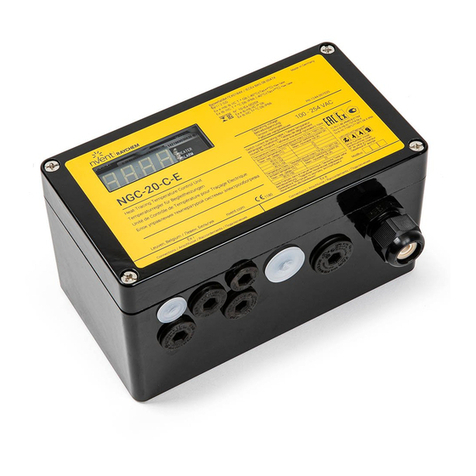
Raychem
Raychem vNent NGC-20-C-E Installation, operating and maintenance instructions
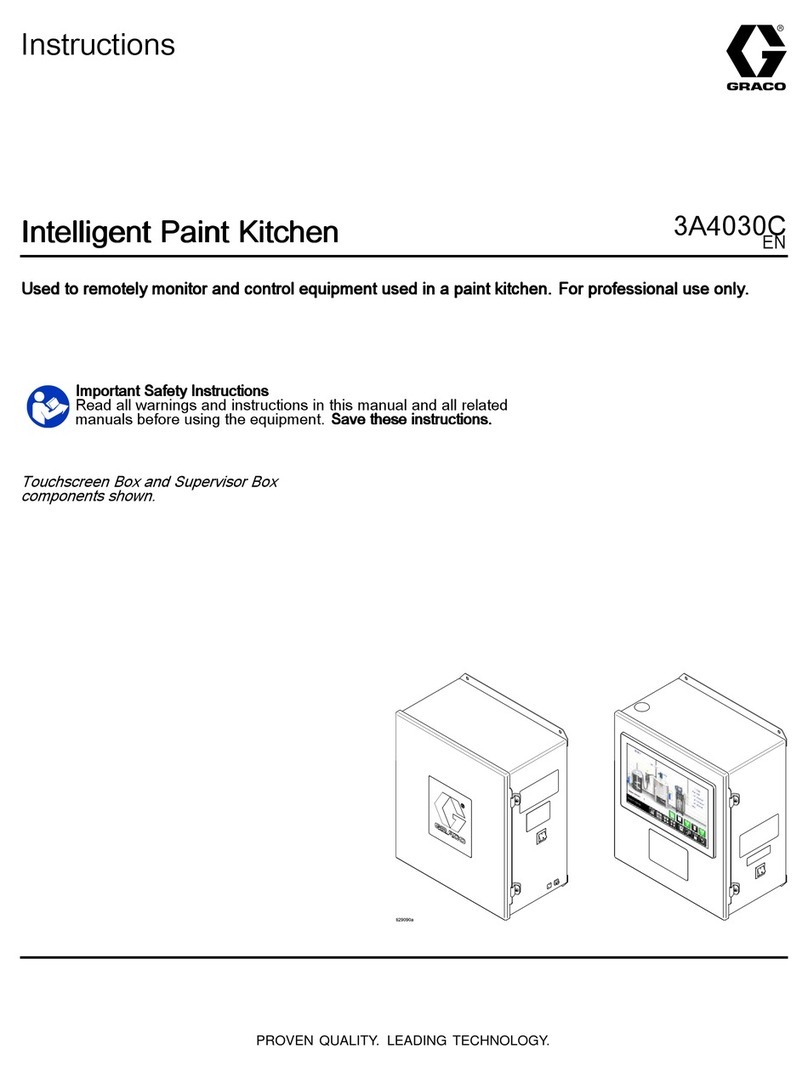
Graco
Graco 25A693 instructions
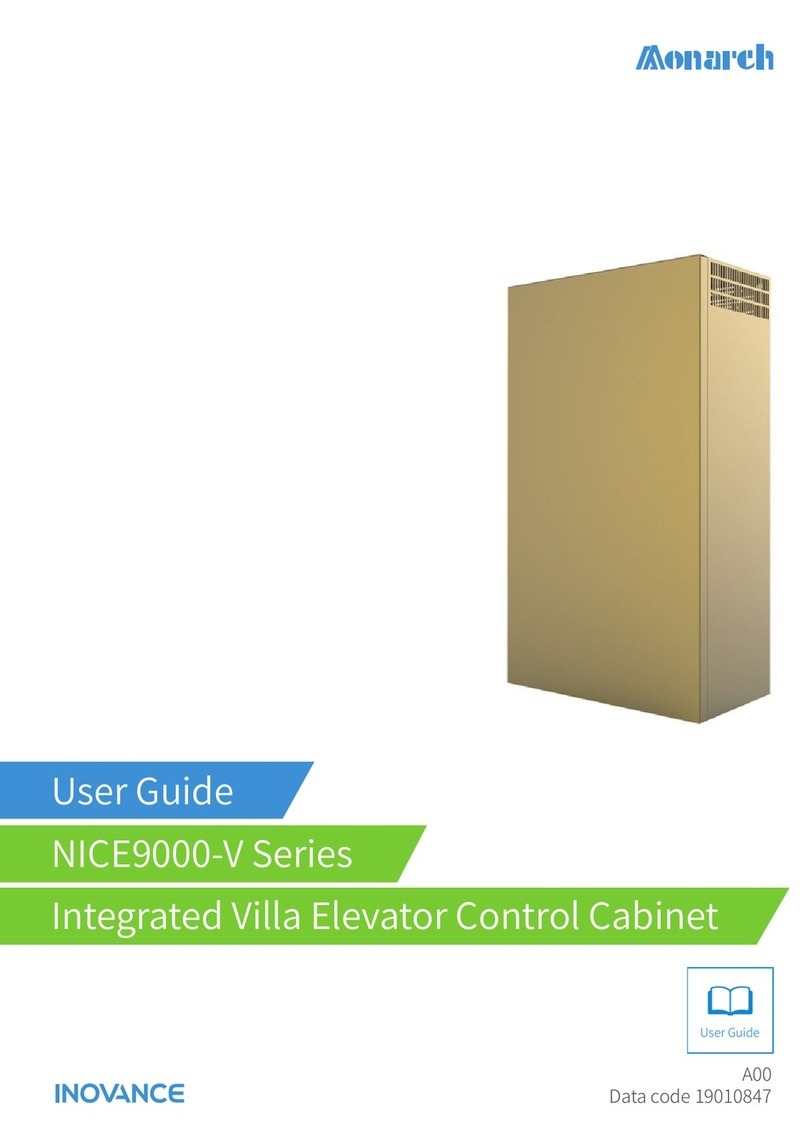
Inovance
Inovance NICE9000-V Series user guide
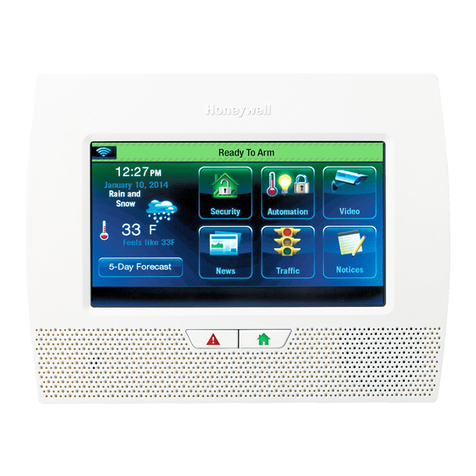
Honeywell
Honeywell LYNX Touch L7000 Series Quick installation guide
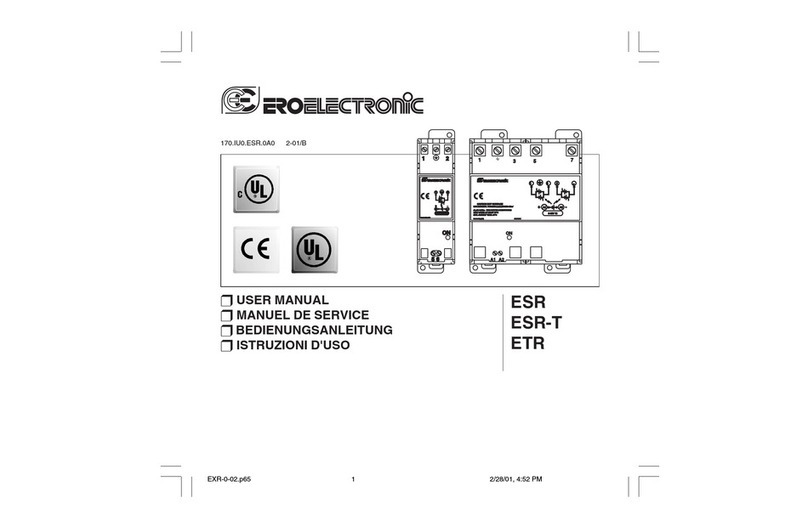
ero electronic
ero electronic ESR user manual
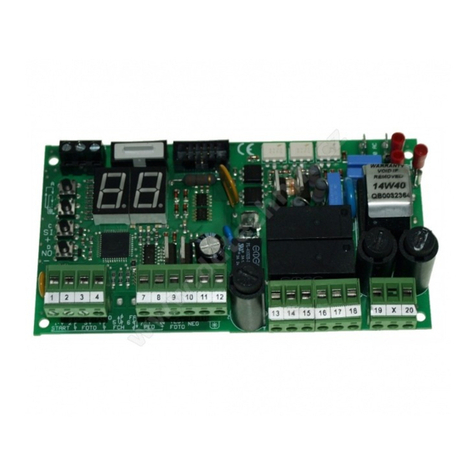
quiko
quiko QK-CE220RL4 user manual

